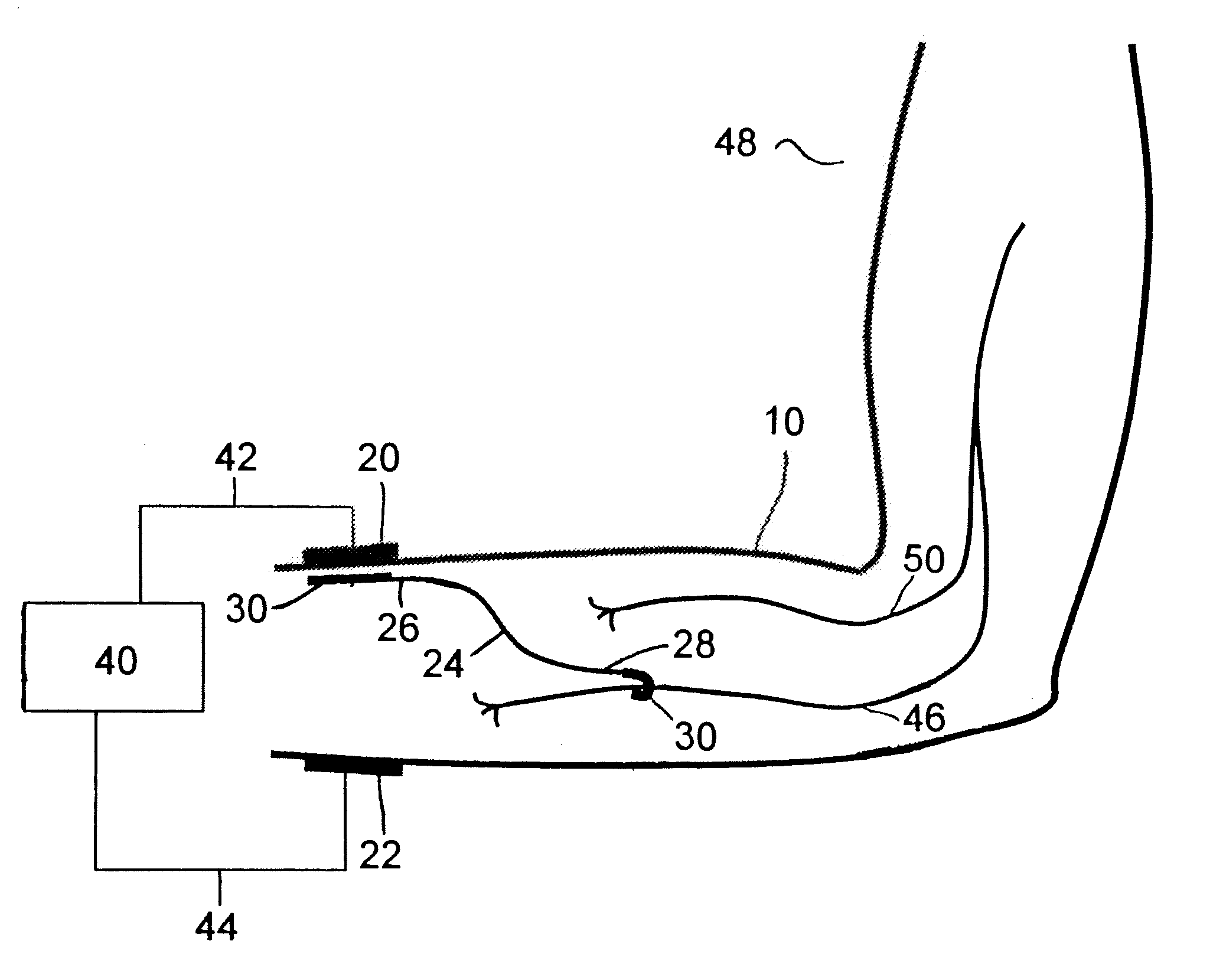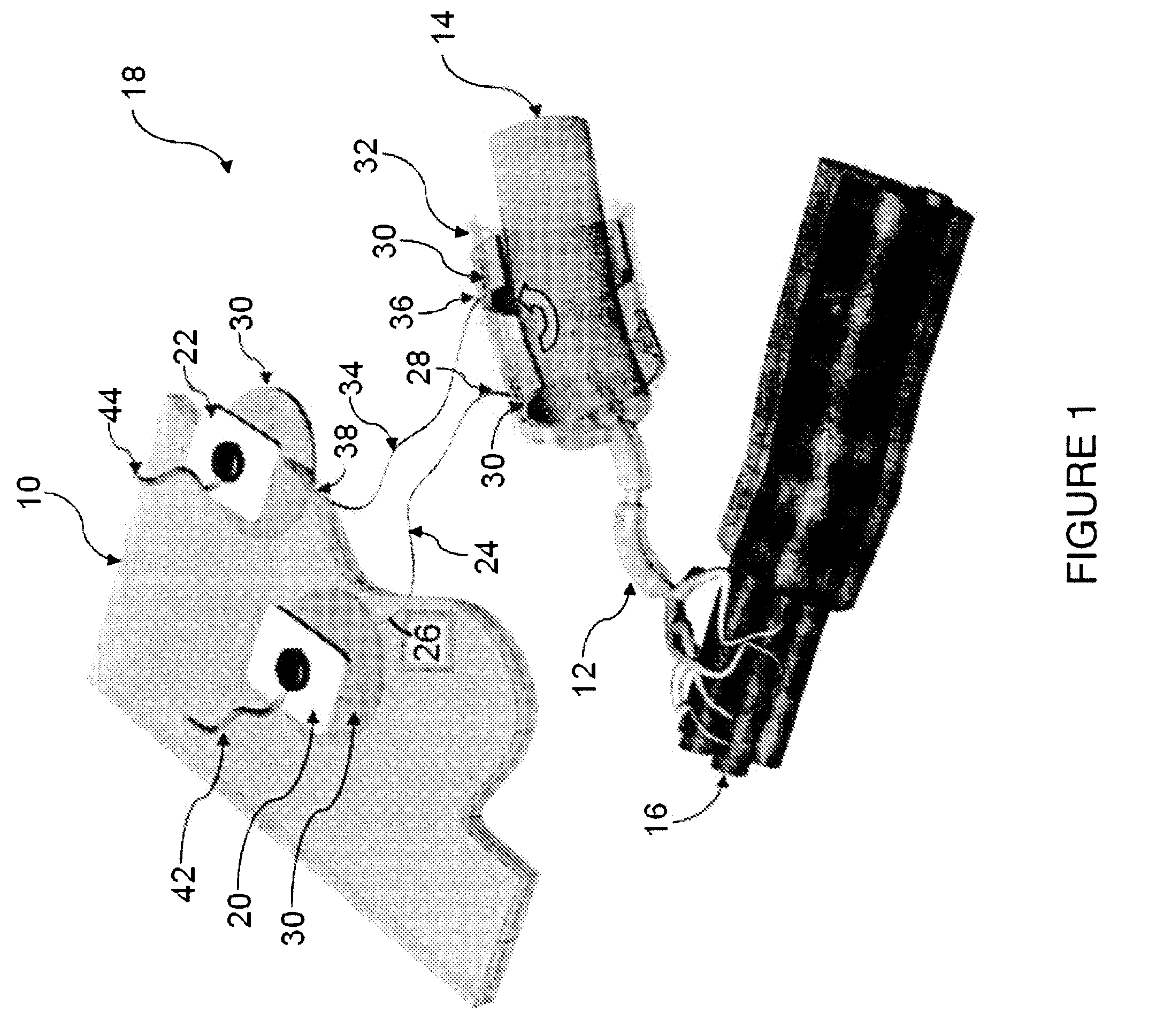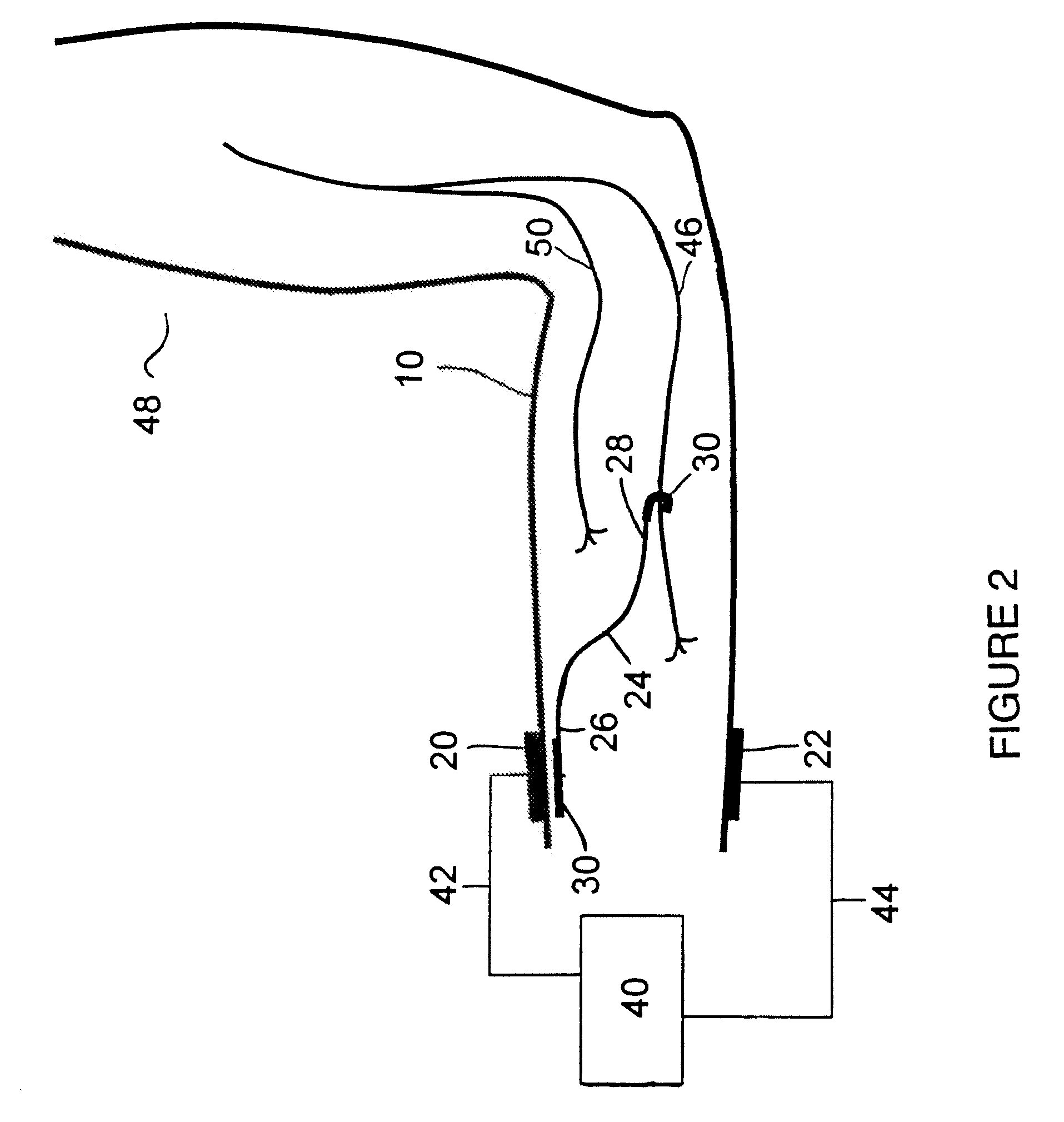Method of routing electrical current to bodily tissues via implanted passive conductors
a passive conductor and electrical current technology, applied in the field of implants, systems and methods for treating disorders of the nervous system, can solve the problems of many non-targeted tissues being co-activated with the targeted tissues, unwanted sensations and/or unwanted movements, and difficult or impossible to stimulate tissues deep within the body
- Summary
- Abstract
- Description
- Claims
- Application Information
AI Technical Summary
Benefits of technology
Problems solved by technology
Method used
Image
Examples
example 1
[0086]Two experiments were performed on anesthetized cats using the present invention to achieve high-frequency blockade of the pudendal nerve.
[0087]Methods
[0088]Surgical procedures: Cats were pre-operatively medicated with acepromazine (0.25 mg / kg intramuscular), glycopyrrolate (0.01 mg / kg intramuscular) and buprenorphine (0.01 mg / kg intramuscular) and anesthetized with a mixture of isoflurane (2-3% in carbogen, flow rate 2 L / min). The trachea was cannulated and connected to a closed loop anesthetic system that monitored respiration rate and assisted ventilation. One jugular or cephalic vein was catheterized to allow administration of fluids and drugs. The bladder was exposed via a midline abdominal incision and catheterized to allow the addition and withdrawal of fluids and the measurement of pressure within the bladder with a pressure transducer (see below). A second catheter (Kendall, closed end Tom Cat catheter) was inserted into the urethra and connected to a second pressure t...
PUM
 Login to View More
Login to View More Abstract
Description
Claims
Application Information
 Login to View More
Login to View More - R&D
- Intellectual Property
- Life Sciences
- Materials
- Tech Scout
- Unparalleled Data Quality
- Higher Quality Content
- 60% Fewer Hallucinations
Browse by: Latest US Patents, China's latest patents, Technical Efficacy Thesaurus, Application Domain, Technology Topic, Popular Technical Reports.
© 2025 PatSnap. All rights reserved.Legal|Privacy policy|Modern Slavery Act Transparency Statement|Sitemap|About US| Contact US: help@patsnap.com



